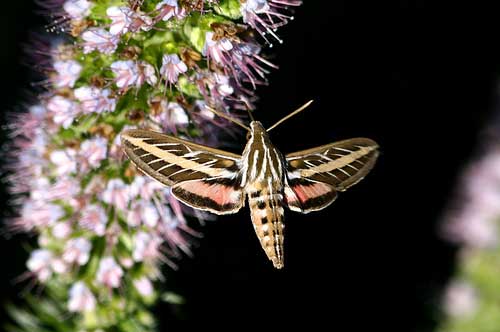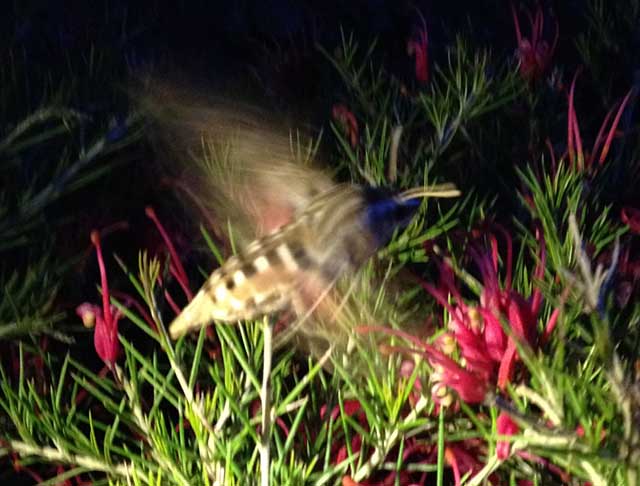San Luis Obispo County
Sphingidae
Hyles lineata, Deer Canyon, Arroyo Grande, San Luis Obispo County, California,
April 6, 2009, courtesy of Brad Schram.
|
|
Updated as per James P. Tuttle's The Hawk Moths of North America, May 4, 2009 |

Hyles lineata, Deer Canyon, Arroyo Grande, San Luis Obispo County, California,
April 6, 2009, courtesy of Brad Schram.
It is hoped that this checklist, with the thumbnails and notes, will help you quickly identify the moths you have encountered.
A WO?" after the species name indicates that I have no confirmed reports of this species in San Luis Obispo County, but I (William Oehlke) expect that this moth is present or might be encountered as an occasional stray.
This page is dedicated to and inspired by Brad Schram who provides the
Hyles lineata image at the top of the page.
Brad writes, "I read that there has been a large movement of these moths on the California coast this year. I've seen many more than normal here the past week or so.
Deer Canyon, Arroyo Grande, California, April 6, 2009."
Please help me develop this list with improved, documented accuracy by sending sightings (species, date, location), preferably with an image, via email to Bill Oehlke.
Sphinginae subfamily
Smerinthini Tribe:
Macroglossinae subfamilyDilophonotini Tribe:
Philampelini Tribe:
Macroglossini Tribe:
Hyles lineata, Templeton, March 28, 2013, Aaron Yonker
|

Hyles lineata, Templeton, San Luis Obispo County, California,
March 28, 2013, courtesy of Aaron Yonker.
Enjoy some of nature's wonderments, giant silk moth cocoons. These cocoons are for sale winter and fall. Beautiful Saturniidae moths will emerge the following spring and summer. Read Actias luna rearing article. Additional online help available.
Use your browser "Back" button to return to the previous page.
This page is brought to you by Bill Oehlke and the WLSS. Pages are on space rented from Bizland. If you would like to become a "Patron of the Sphingidae Site", contact Bill.
Please send sightings/images to Bill. I will do my best to respond to requests for identification help.
 Show appreciation for this site by clicking on flashing butterfly to the left. The link will take you to a page with links to many insect sites. |